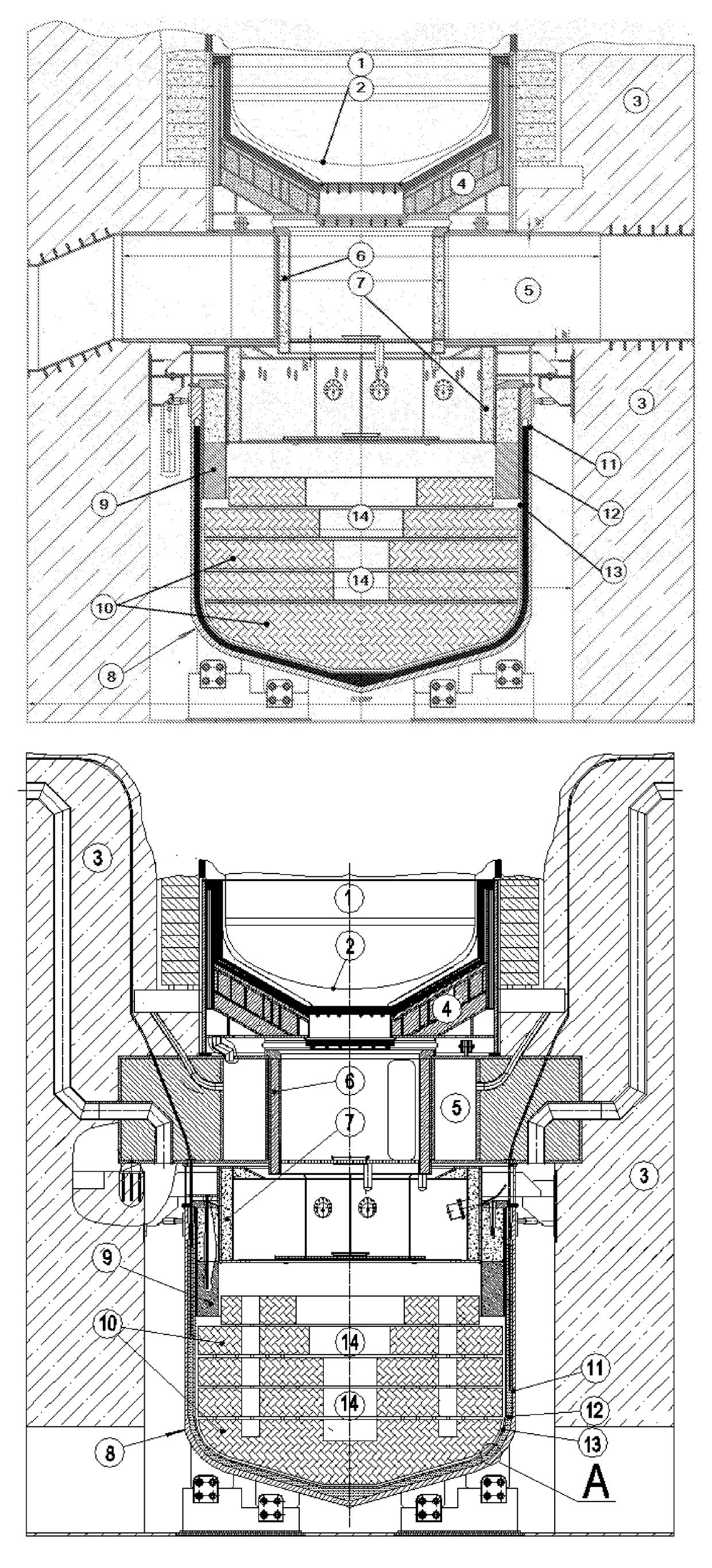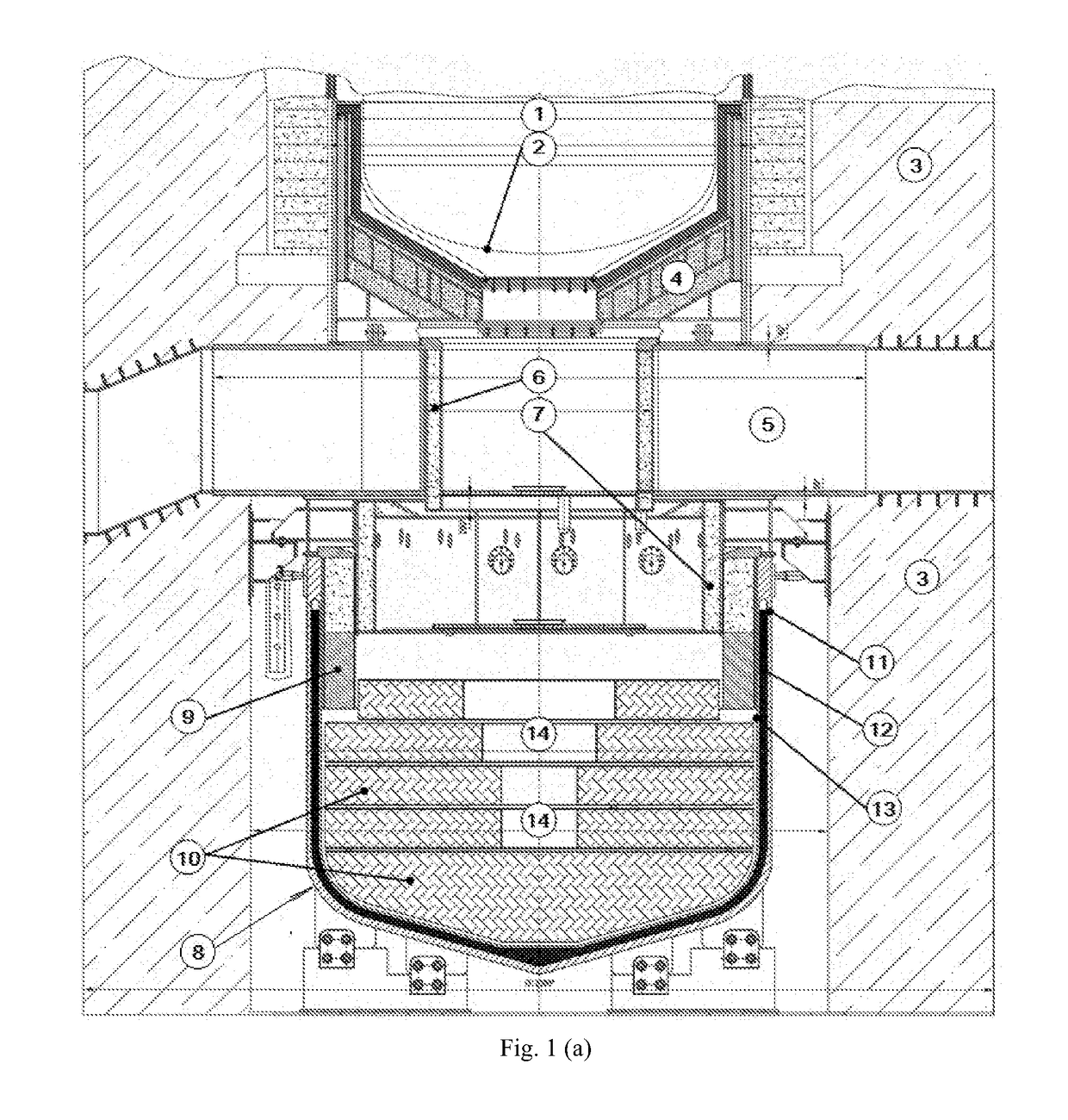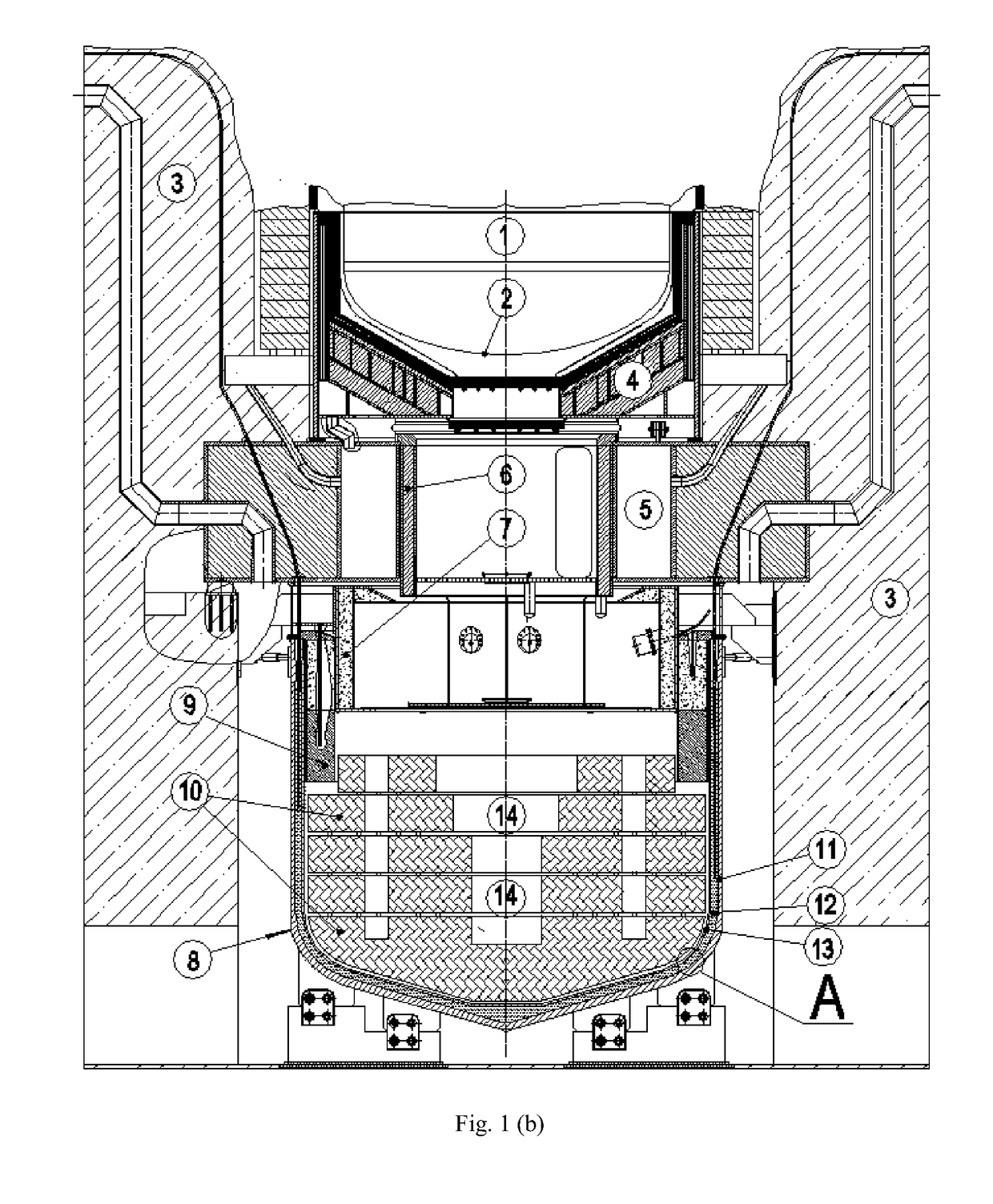Water-Cooled Water-Moderated Nuclear Reactor Core Melt Cooling and Confinement System
a technology of water-moderated nuclear reactors and core melts, which is applied in the field of water-moderated water-moderated nuclear reactor core melt cooling and confinement systems, can solve the problems of incorrect reduction of water content in cement binders in order to reduce hydrogen release, “jamming” of pellets, and damage to exchangers, so as to improve structural reliability and heat removal efficiency. the effect of efficiency
- Summary
- Abstract
- Description
- Claims
- Application Information
AI Technical Summary
Benefits of technology
Problems solved by technology
Method used
Image
Examples
Embodiment Construction
[0041]According to the claimed invention, a cone-shaped guide plate (4) supported by a cantilever girder (5) with thermal protection (6) is installed under the bottom (2) of the reactor vessel (1) located in a concrete vault (3). Under the cantilever girder (5), there is a core catcher (8) with a cooled cladding (vessel) in the form of a multi-layer vessel containing an external (11) and an internal (13) metal layers (walls) with a poorly heat-conductive filler (12) in between.
[0042]Inside the core catcher (8) there is a sacrificial filler (10) applied to dilute corium. In addition, the filler (11) is equipped with a graded, tapered or cylindrical sump (14) for corium accommodation.
[0043]Besides, the core catcher vessel (8) is provided with thermal protection (9) of a multi-layer vessel flange.
[0044]An operating floor (7) is located in the space between the cantilever girder (5) and the catcher (8).
[0045]The guide plate (4) is designed to guide the corium (core melt) after reactor v...
PUM
 Login to View More
Login to View More Abstract
Description
Claims
Application Information
 Login to View More
Login to View More - R&D
- Intellectual Property
- Life Sciences
- Materials
- Tech Scout
- Unparalleled Data Quality
- Higher Quality Content
- 60% Fewer Hallucinations
Browse by: Latest US Patents, China's latest patents, Technical Efficacy Thesaurus, Application Domain, Technology Topic, Popular Technical Reports.
© 2025 PatSnap. All rights reserved.Legal|Privacy policy|Modern Slavery Act Transparency Statement|Sitemap|About US| Contact US: help@patsnap.com



